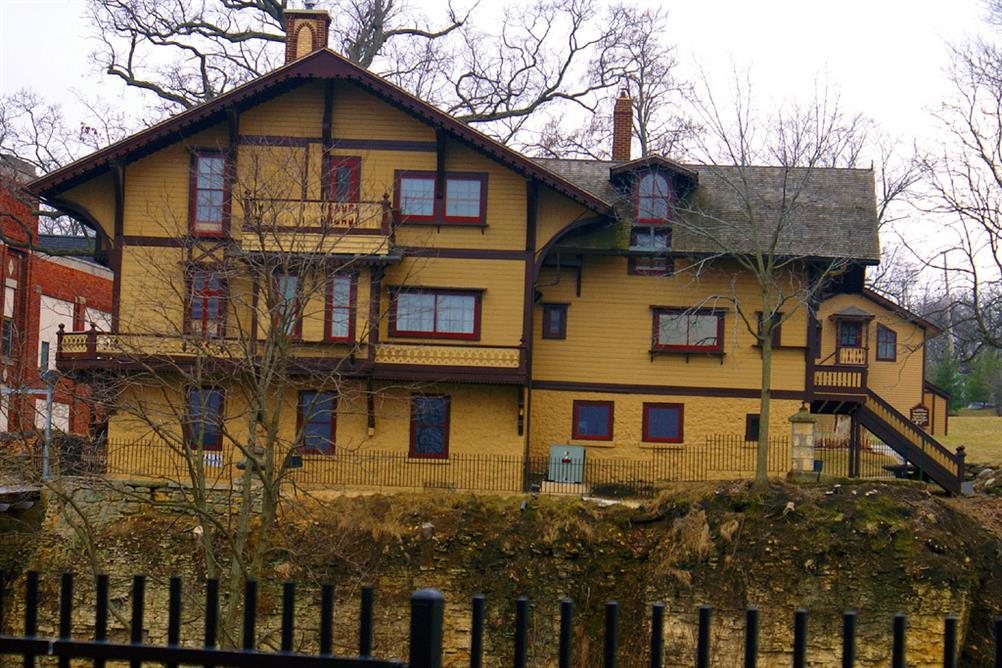- Details
A typical haunted house features actors in creepy masks and spooky costumes, jumping out to startle guests—but there are places in Illinois where the scares aren’t just entertainment. You’re in for a real fright at these haunted homes.
Tinker Swiss Cottage, Rockford

This unassuming cottage is purported to have served as a home for terminally ill children. Some people claim they hear humming, as well as the voices of the children once housed there. But that’s not all: The spirits of the whole Tinker family are said to linger around the cottage, too.
- Details
 Upset that you can no longer watch Friends reruns on Netflix? Don’t worry! Warner Bros. and Superfly have opened the FRIENDS Experience in Chicago to give fans a chance to reenact all their favorite moments from the classic sitcom.
Upset that you can no longer watch Friends reruns on Netflix? Don’t worry! Warner Bros. and Superfly have opened the FRIENDS Experience in Chicago to give fans a chance to reenact all their favorite moments from the classic sitcom.
Visitors can walk through twelve rooms and explore set recreations, original props and costumes, and interactive moments. You can even hang out in Joey and Chandler’s apartment or take a seat on the famous orange couch from Central Perk.
- Details
 Pumpkins are a fall necessity! The pumpkin has been a North American staple since long before the arrival of European settlers, and Illinois farmers continue the big orange squash’s long tradition by growing more pumpkins than anywhere else in the world. Illinois grows 90-95 percent of the processed pumpkins in the U.S. Most of the processing takes place in Morton, Ill. – which has claimed the title of “Pumpkin Capital of the World” since 1978.
Pumpkins are a fall necessity! The pumpkin has been a North American staple since long before the arrival of European settlers, and Illinois farmers continue the big orange squash’s long tradition by growing more pumpkins than anywhere else in the world. Illinois grows 90-95 percent of the processed pumpkins in the U.S. Most of the processing takes place in Morton, Ill. – which has claimed the title of “Pumpkin Capital of the World” since 1978.
In 1967, the Morton Chamber of Commerce organized the city’s first Pumpkin Festival to celebrate the beginning of the pumpkin harvest and canning season at the local Libby’s pumpkin processing plant. Today, the festival includes over 30 special events and venues hosted and organized by over 2,000 volunteers. The festival welcomes an estimated 70,000 visitors every September.
Libby’s Morton plant has about 5,000 acres of fertile farm land devoted to producing pumpkins. In 2012, Libby’s became the official sponsor for the Morton Pumpkin Festival!
- Details
 Even during the COVID-19 pandemic there are some haunted houses in Illinois that can still be enjoyed this year, with public health safety precautions in place. One such haunted house, is the Boo Crew Haunted House.
Even during the COVID-19 pandemic there are some haunted houses in Illinois that can still be enjoyed this year, with public health safety precautions in place. One such haunted house, is the Boo Crew Haunted House.
The Boo Crew Haunted House is an annual event hosted by the Rochester Lions Club. There are typically both indoor and outdoor portions to the haunted house, but the event will be fully outdoors this year to help maintain social distancing. The Boo Crew promises this “Trail of Lost Souls” will be their scariest trail yet.
The Boo Crew has implemented many health and safety precautions this year to help keep actors and guests safe. Masks will be required, and actors must keep their distance from guests—any up-close scares will be done by animatronics or stationary props. Ticket sales and group sizes are limited this year to keep crowds to a minimum.
- Details
 Just 25 miles north of St. Louis, Alton is small city with more than its fair share of vibrant history. Founded in 1837, Alton was the site of the final debate between Abraham Lincoln and Stephen Douglas in 1858. It was the home town of Robert Wadlow, the world's tallest man, and it is where legendary jazz musician Miles Davis was born, just to name a few facts. But what the city of Alton is famous (or perhaps infamous) for is that it’s considered to be one of the most haunted towns in the United States.
Just 25 miles north of St. Louis, Alton is small city with more than its fair share of vibrant history. Founded in 1837, Alton was the site of the final debate between Abraham Lincoln and Stephen Douglas in 1858. It was the home town of Robert Wadlow, the world's tallest man, and it is where legendary jazz musician Miles Davis was born, just to name a few facts. But what the city of Alton is famous (or perhaps infamous) for is that it’s considered to be one of the most haunted towns in the United States.
There are many locations around the city associated with reports of paranormal activity, such as a school, local cemeteries, and a prison. First opened in 1833, the Alton Prison was the first Illinois State Penitentiary. It was closed in 1860 and reopened two years later as a military prison during the Civil War. The majority of the prison’s population were Confederate prisoners and it is estimated that over 11,000 of them were brought to the jail in just three years.



